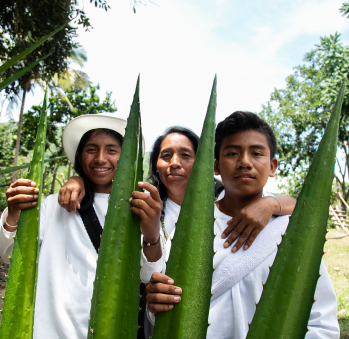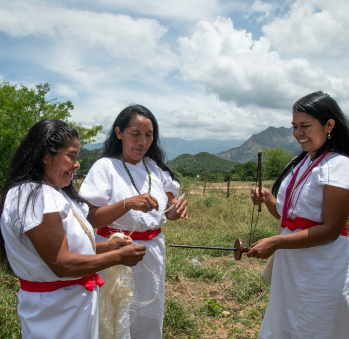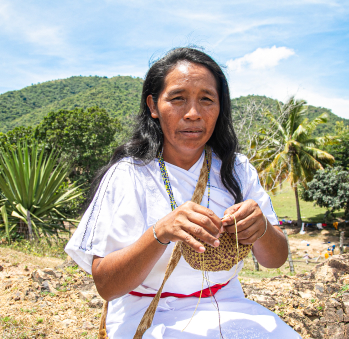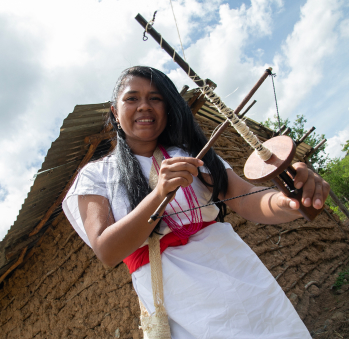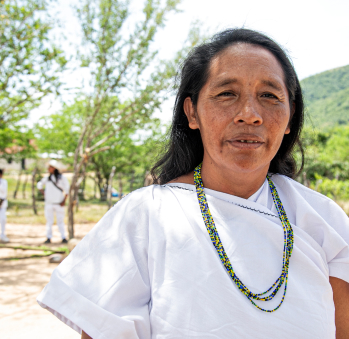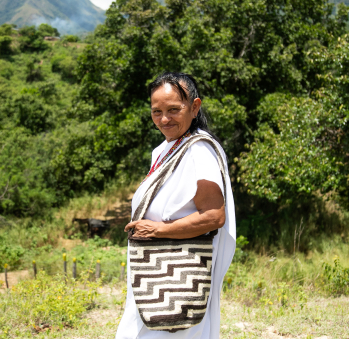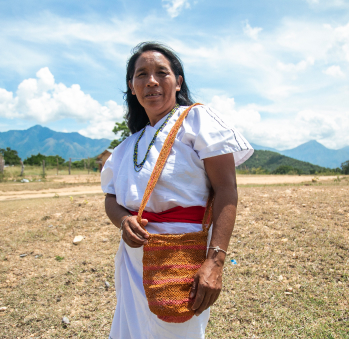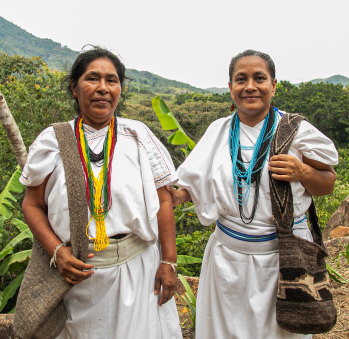Gloria Malo
Workshop: Kugabi
Craft: Tejeduría
Trail: Cesar Route
Location: Valledupar, Cesar
Gloria Malo stands as the leader of a collective of craftswomen known as Kugabi. The prefix “”Ku”” signifies the surrounding environment, while “”GABI”” speaks to the act of weaving, encompassing not only bags but also the very fabric of the land. This parallels the manner in which men till the soil and sow crops such as sweet potatoes, yucca, yams, corn, papaya, cantaloupe, and pumpkin. Among the Wiwa people, while every woman engages in the weaving of hemp bags, collaborative efforts are uncommon. Leveraging her gifts of patience and persuasion, Gloria has brought together a group of fifteen individuals, between women and youngsters, all united under a common goal: to put the ones who weave the bags, Wiwa women, in the spotlight of their craft. Furthermore, the objective includes the rescuing and integration of artisanal knowledge into schools, given its historical transmission through oral traditions.
The tradition of weaving hemp bags circulates within Wiwa families – a union of a woman, a man, and their progeny. The man’s role centers on the search for and processing of hemp, which is then handed over to his spouse. She, in turn, weaves bags integral to their household, serving purposes such as carrying the husband’s harvested produce. Additionally, the woman takes on the responsibility of orally imparting weaving techniques to their offspring, when they have the tender ages of six or seven. According to the Wiwa history and tradition, these bags were not initially driven by commercial motives. Exchanges certainly existed, but as their community has gone through changes caused by the violence, such as forced displacement, and they have had to relocate to places different from their original territory, the bags have become an important part of their economy. That’s why now they have a commercial use.
Gloria’s current life within the indigenous reservation contrasts with her life in Cherúa, a town nestled in the Sierra Nevada of Santa Marta, where she was born and completed her primary education. The climate was notably cooler there, and crops like plantains, bananas, taro, and coffee grew on the hillsides. Now, she lives among savannas and prairies, paved roads, high schools and a larger flow of people. Going through all these changes, it became necessary for Gloria to affirm her identity, recognizing the importance of preserving her cultural heritage alongside her weaving community. One way of achieving this involves the revival of traditional stitching techniques utilized in crafting a diverse array of bags.
Until recent times, Gloria and her peers knew just two or three stitching styles. Today, their repertoire includes over seven styles. Their pursuit has led them to connect with women possessing this knowledge and exchanging their insights. They have discovered that, apart from having different names, the stitches have different uses as well. Each stitch carries a unique role when crafting bags designated for baptism, marriage, or funerals. Additionally, they’ve found out the connection between various kinds of aloes and specific rituals, such as commemorating a passing or a girl’s rite of menarche.
Gloria has a dream: the documentation of the extensive knowledge underlying the weaving tradition. She fears that this wisdom, traditionally safeguarded by the mamos or spiritual guides, might get lost. She dreams of educational institutions where young girls and boys gain insights into the significance of their crafts and traditions, and for their stitches to become a badge of Wiwa identity. Yet, she remains aware that this is only the beginning. Beyond, an entirely new exploration awaits them: the intricacies of weaving fans, hats, and hammocks – an art historically passed from father to son.
Craft


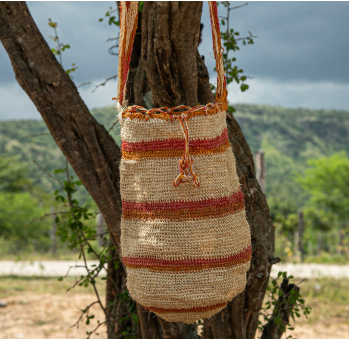

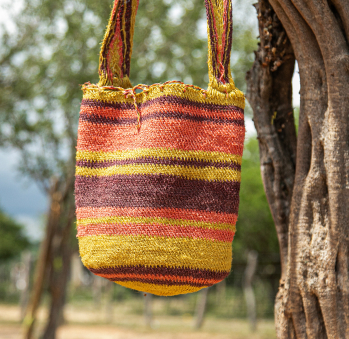
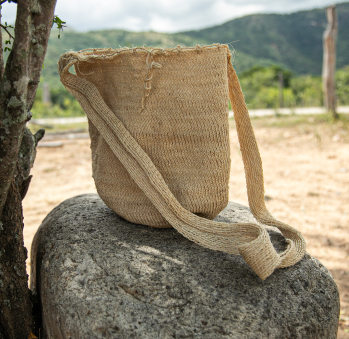

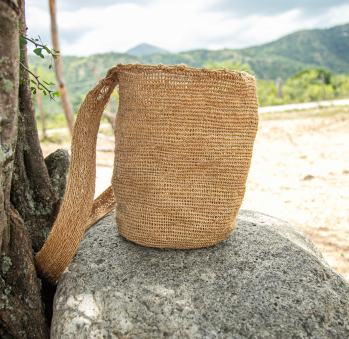








Artisans along the way
Artisans along the way
No puede copiar contenido de esta página










































